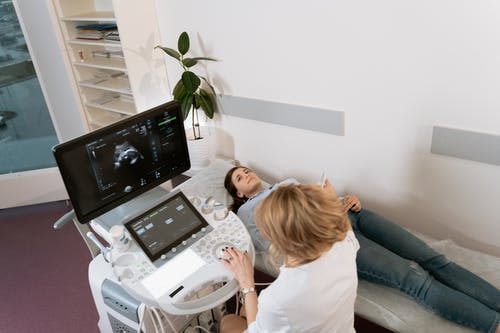In the world of modern healthcare, technology is evolving rapidly, with medical professionals constantly seeking new and improved ways to diagnose and treat patients. Among the various diagnostic tools available, ultrasound has emerged as one of the most valuable, offering non-invasive, accurate, and real-time imaging. Over the years, ultrasound has proven to be an indispensable tool for healthcare providers across multiple disciplines, from obstetrics and cardiology to emergency medicine and musculoskeletal assessments.
But what makes ultrasound stand out as the non-invasive diagnostic tool of the future? In this blog post, we’ll dive into the many benefits of ultrasound technology and explore why it is rapidly becoming the go-to choice for diagnosing a variety of conditions.
1. The Power of Non-Invasive Imaging
The term “non-invasive” refers to procedures that do not require surgery or insertion of instruments into the body. Unlike many other diagnostic techniques, such as CT scans or MRIs, ultrasound does not involve any penetration of the skin, radiation, or exposure to potentially harmful substances. This makes it an attractive option for both patients and healthcare providers, especially when continuous monitoring or multiple examinations are needed.
Why It Matters:
- No Need for Incisions: Ultrasound imaging uses sound waves rather than needles or knives, making it pain-free and easy to perform, even in fragile or vulnerable patients.
- Repeated Use: Because ultrasound is non-invasive and doesn’t involve harmful radiation, it can be used repeatedly to monitor patients without the risk of cumulative harm. This is especially beneficial for monitoring pregnancy, chronic conditions, and disease progression over time.
In an era where patient comfort and safety are top priorities, ultrasound offers a clear advantage by minimizing the risks typically associated with more invasive diagnostic procedures.
2. Safety and Minimal Risk
When it comes to diagnosing medical conditions, safety is always a top concern. Ultrasound technology is considered one of the safest diagnostic methods available. Unlike X-rays, CT scans, and MRIs, ultrasound does not use ionizing radiation, which is known to pose risks, particularly with repeated exposure. As a result, ultrasound offers an inherently safer option, especially for pregnant women, young children, and individuals with a higher risk of radiation-induced complications.
Why It Matters:
- No Radiation Exposure: Ultrasound uses high-frequency sound waves, which are completely safe for the body. This makes it ideal for regular use without worrying about long-term health effects.
- Suitable for All Ages: Ultrasound is safe for patients of all ages, including pregnant women, infants, and the elderly. This universal safety profile makes it a go-to diagnostic tool for a wide range of patient demographics.
By offering a risk-free, non-radiating alternative, ultrasound presents a reassuring option for both patients and healthcare providers, allowing for more frequent testing with peace of mind.
3. Real-Time Imaging for Faster Diagnosis
One of the most notable benefits of ultrasound is its ability to provide real-time images of the inside of the body. While other imaging modalities may require time to develop or process images, ultrasound offers immediate feedback, which can help healthcare professionals make quick and accurate decisions.
Why It Matters:
- Instant Results: With ultrasound, doctors and clinicians can see live images of the area being examined. This allows for immediate analysis and faster diagnosis, which is critical in emergency situations or when quick decisions need to be made.
- Guided Procedures: Real-time imaging is particularly useful for guiding minimally invasive procedures, such as biopsies or injections, ensuring that they are performed with high precision and accuracy.
The ability to get instant feedback means that ultrasound is not only a faster diagnostic tool but also allows healthcare providers to act swiftly in treatment and intervention, improving patient outcomes.
4. Wide Range of Applications Across Medical Specialties
Ultrasound technology is incredibly versatile, with applications spanning across a wide variety of medical fields. It is used in obstetrics to monitor fetal development, in cardiology to assess heart health, in musculoskeletal medicine to evaluate soft tissue injuries, and in emergency rooms to quickly assess trauma patients. As technology continues to improve, ultrasound is increasingly being utilized in even more areas of medicine, including cancer diagnostics and pain management.
Why It Matters:
- Obstetrics: Ultrasound has long been the preferred method for monitoring pregnancies, offering a non-invasive way to assess fetal health, monitor growth, and detect potential complications.
- Cardiology: Cardiac ultrasound (echocardiography) is used to assess heart function, identify valve abnormalities, and diagnose conditions such as heart failure and arrhythmias.
- Musculoskeletal Medicine: Ultrasound helps to visualize tendons, ligaments, muscles, and joints, making it an invaluable tool for diagnosing soft tissue injuries and conditions such as arthritis or tendonitis.
- Emergency Medicine: Ultrasound is becoming increasingly popular in emergency departments for assessing trauma patients in real-time, helping to quickly identify internal bleeding, organ damage, or fractures.
The expanding range of ultrasound’s applications is another reason it is being seen as the diagnostic tool of the future. Its versatility allows it to be used across different specialties, improving diagnostic capabilities in multiple areas of patient care.
5. Cost-Effectiveness and Accessibility
One of the reasons ultrasound is becoming increasingly popular in healthcare settings is its cost-effectiveness. Compared to other imaging methods like CT scans or MRIs, ultrasound equipment tends to be more affordable, both in terms of initial purchase cost and operational expenses. Additionally, ultrasound machines are often more portable and can be used in a variety of settings, including at the patient’s bedside, in outpatient clinics, and in remote or underserved areas.
Why It Matters:
- Lower Equipment Costs: Ultrasound machines are generally more affordable than CT or MRI machines, making them more accessible to hospitals and clinics with limited budgets.
- Affordable Testing: Since ultrasound is more cost-effective to operate, it’s often less expensive for patients, reducing out-of-pocket costs for imaging and diagnostic tests.
- Portable and Accessible: With portable ultrasound devices, healthcare providers can perform exams in a variety of settings, including rural or low-resource environments, bringing diagnostic capabilities to places where traditional imaging methods might not be available.
In healthcare systems focused on reducing costs while maintaining quality care, ultrasound provides a powerful solution that balances affordability with diagnostic precision.
6. Advancements in Technology: Better Imaging and More Applications
As ultrasound technology continues to advance, its capabilities are expanding, providing even higher-quality images and more detailed information. Modern ultrasound machines now offer 3D and 4D imaging, Doppler ultrasound for assessing blood flow, elastography for measuring tissue stiffness, and even AI-powered tools that help with image interpretation and diagnosis.
Why It Matters:
- Enhanced Image Quality: Advances in imaging technology mean that ultrasound can now capture highly detailed and accurate images, making it possible to diagnose even subtle abnormalities with precision.
- Increased Diagnostic Power: Techniques like Doppler ultrasound and elastography provide additional diagnostic information, such as blood flow patterns and tissue stiffness, which helps healthcare professionals diagnose a broader range of conditions.
- Artificial Intelligence Integration: The integration of AI in ultrasound machines helps enhance diagnostic accuracy by automatically detecting and highlighting key features within the images, allowing for faster, more reliable diagnoses.
With these innovations, ultrasound is becoming an even more powerful diagnostic tool, further solidifying its role in the future of healthcare.
Conclusion: The Future Is Ultrasound
As we move forward, it’s clear that ultrasound will continue to play a pivotal role in the evolution of diagnostic medicine. Its non-invasive nature, combined with its safety, real-time capabilities, cost-effectiveness, and versatility, makes it the tool of choice for healthcare providers across a variety of specialties. As technology continues to improve, ultrasound will only become more powerful, offering new ways to diagnose, treat, and monitor patients with greater accuracy and efficiency.
For healthcare professionals looking to stay ahead of the curve, mastering ultrasound technology is not just a career advancement opportunity—it’s an essential skill that can improve patient care, enhance diagnostic accuracy, and ensure that you are prepared for the future of healthcare.
At Ultrasound Trainings, we are committed to providing the latest ultrasound training and certification to healthcare professionals. Whether you’re a doctor, nurse practitioner, midwife, or physician assistant, our courses will equip you with the skills needed to use ultrasound effectively in your practice. Contact us today to learn more about our ultrasound training programs!


